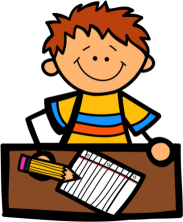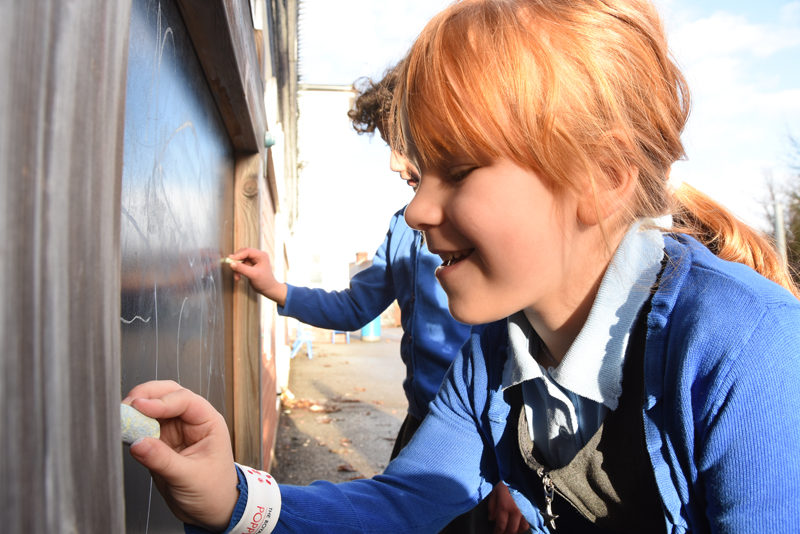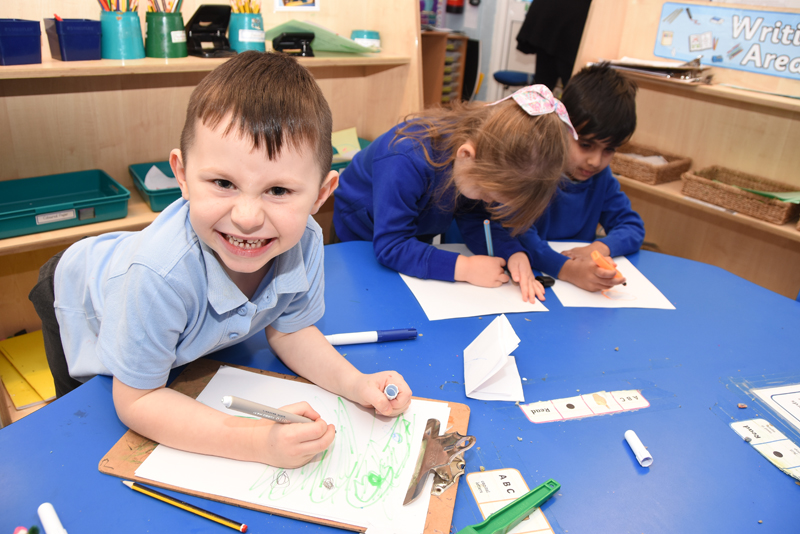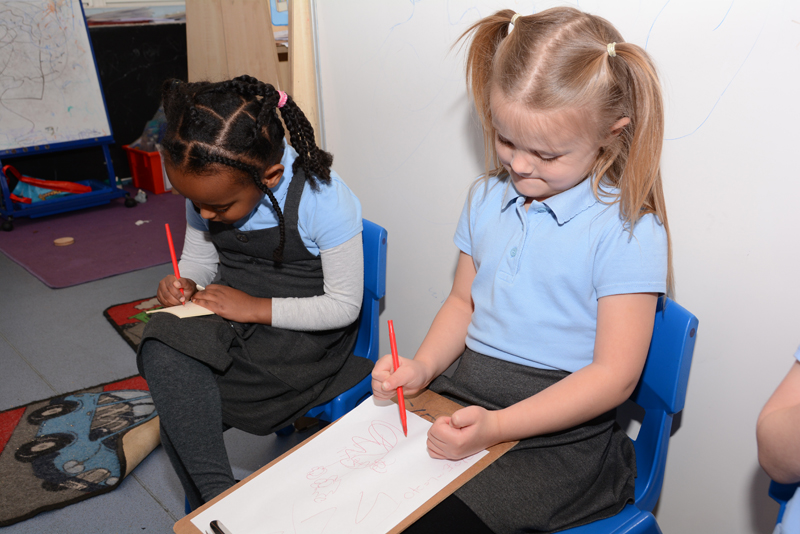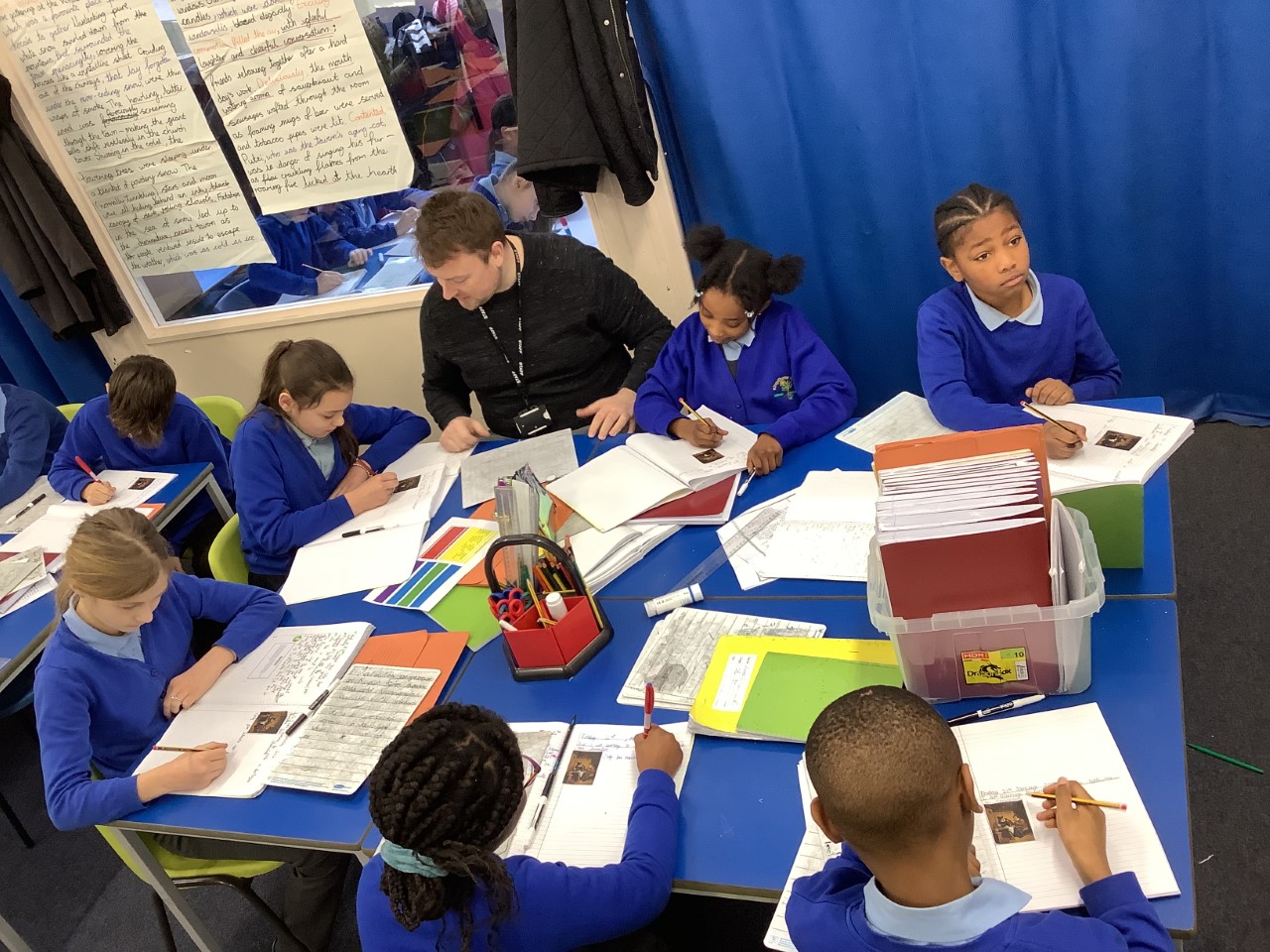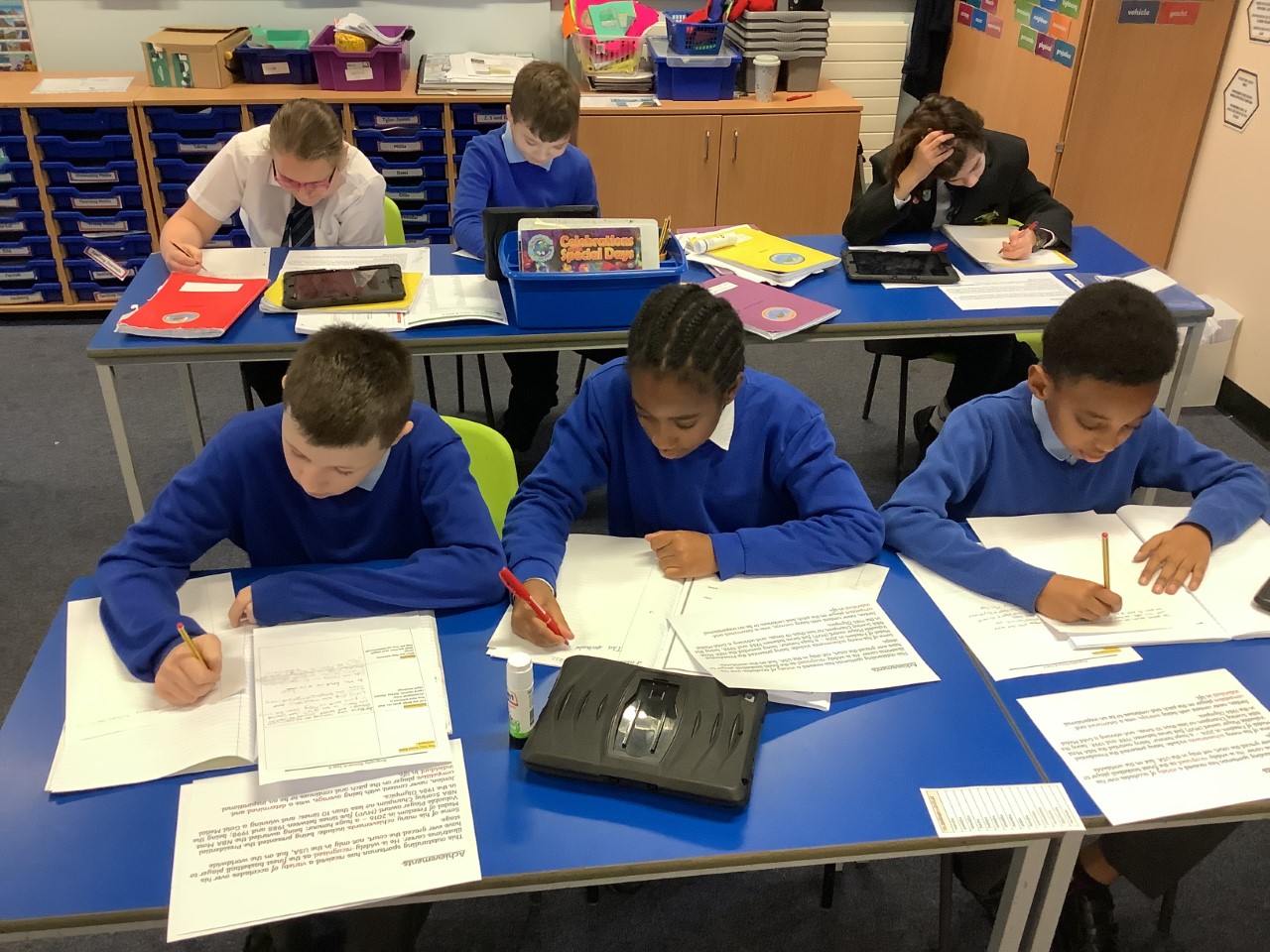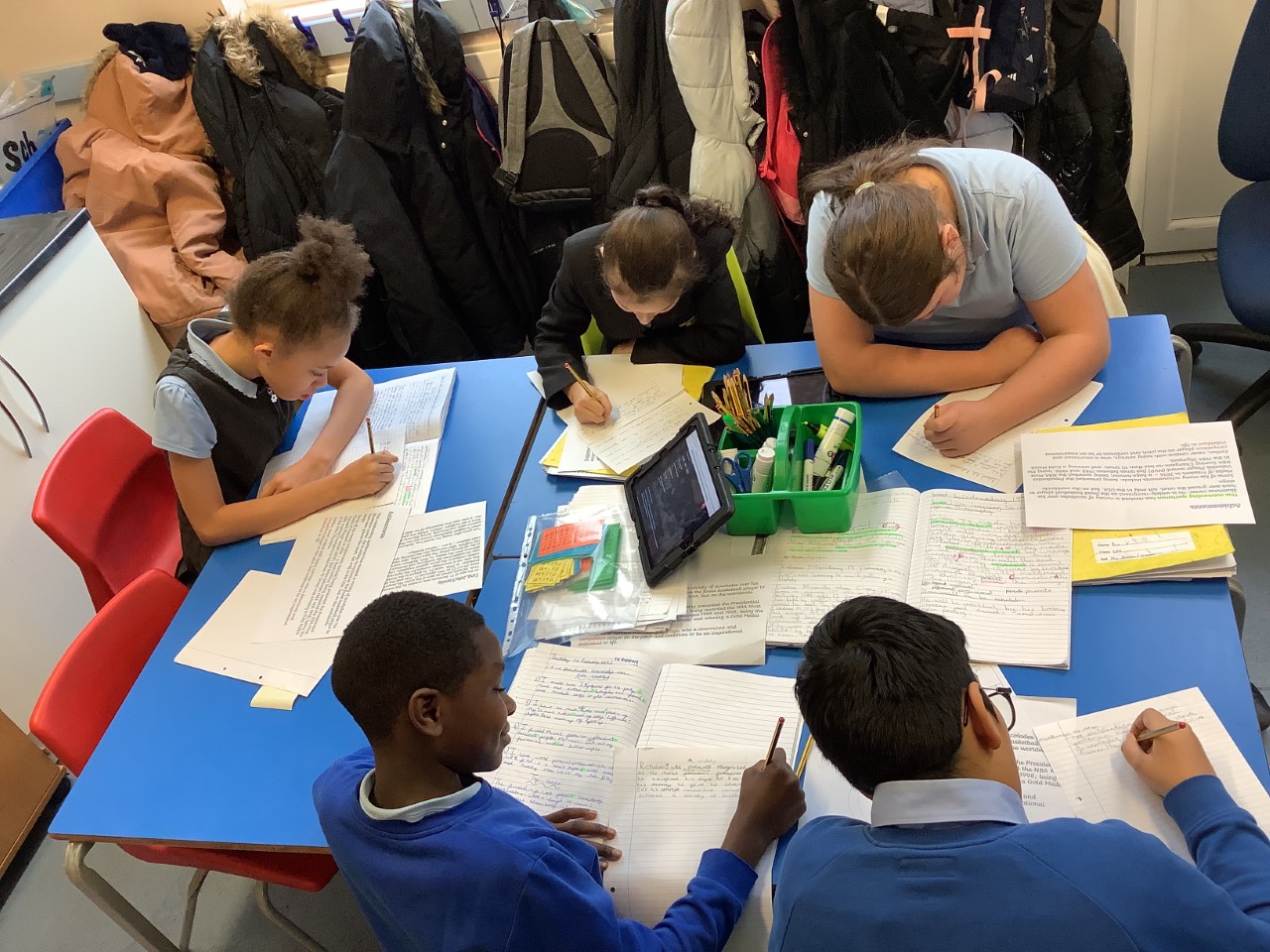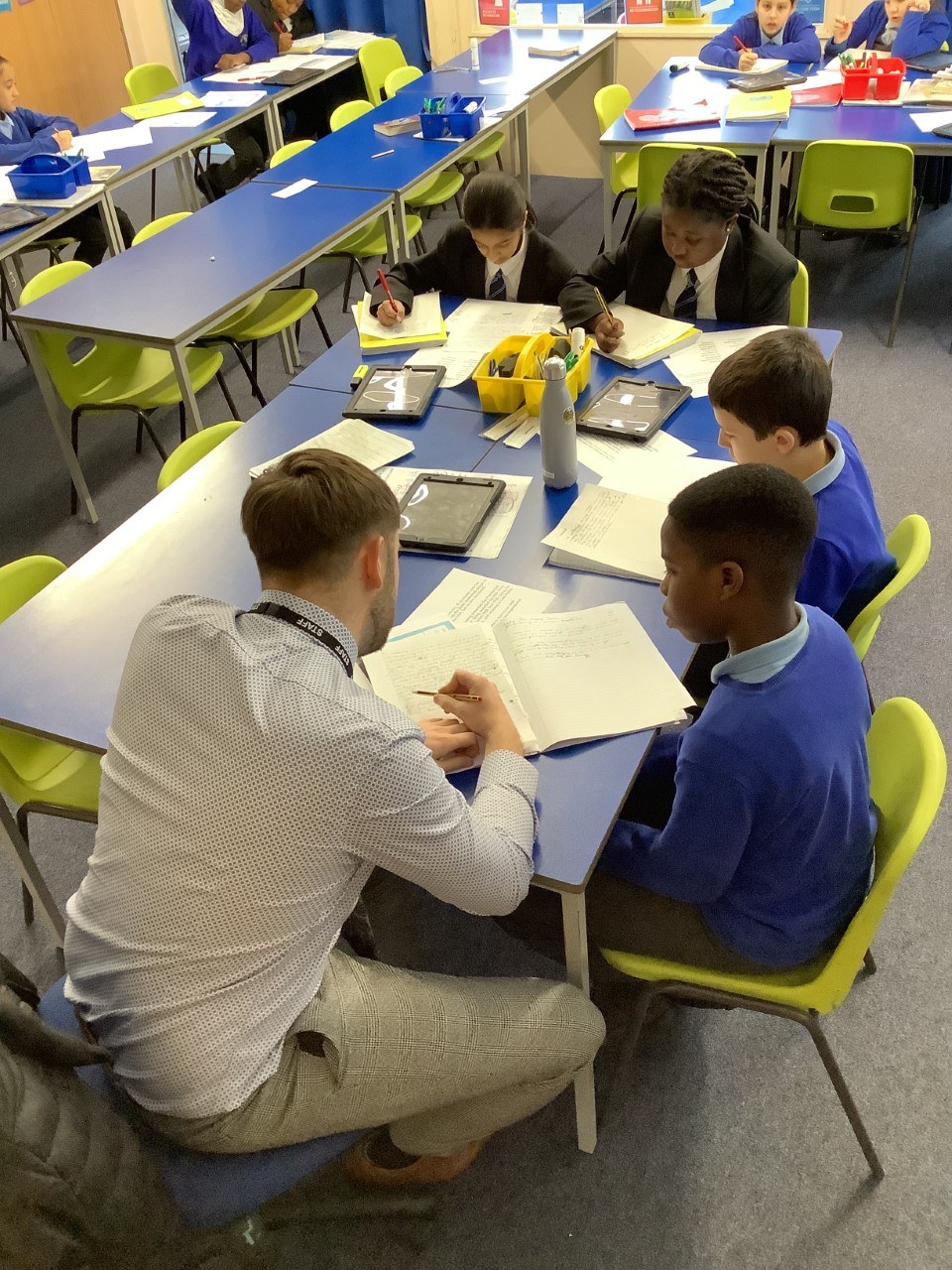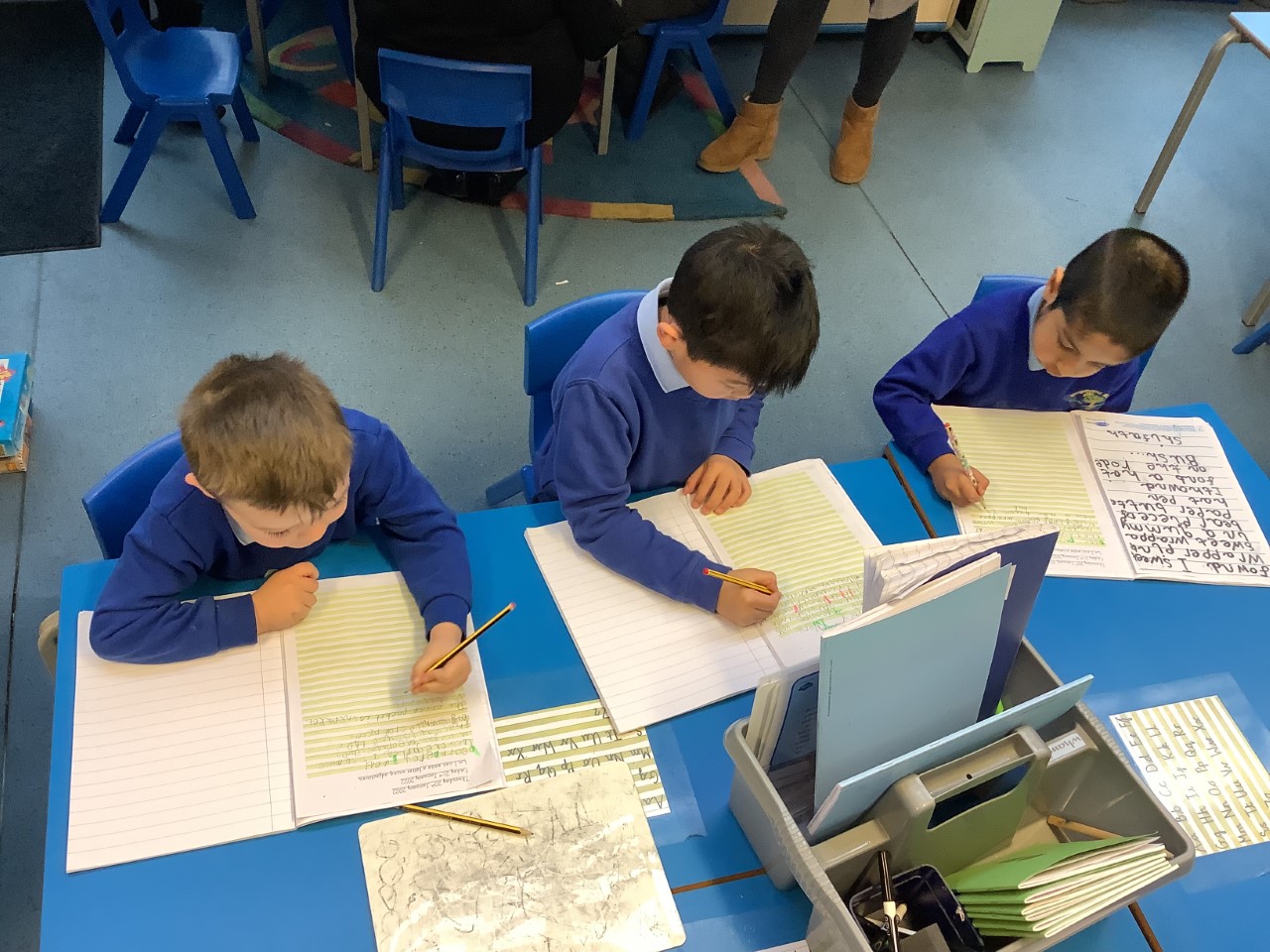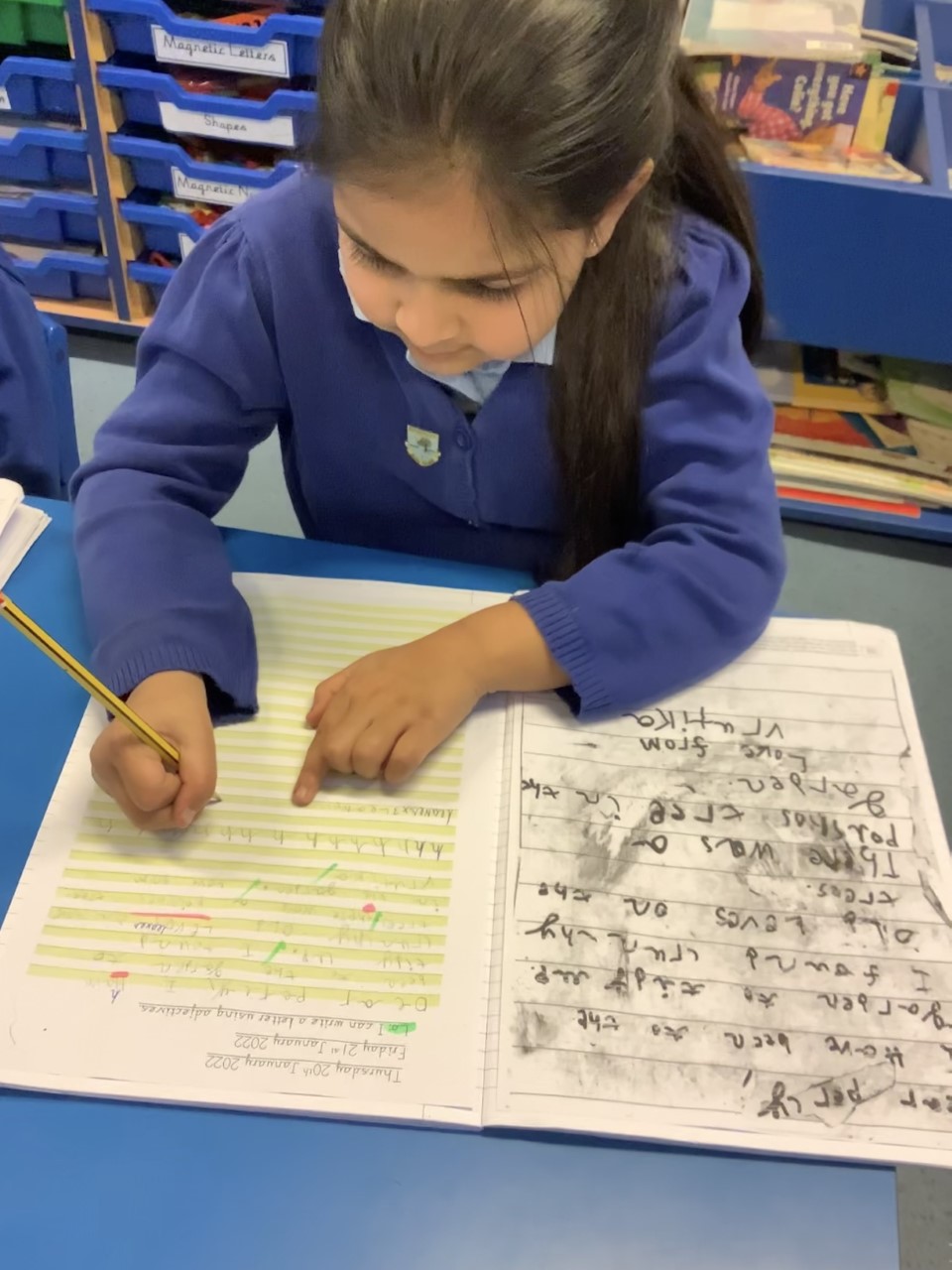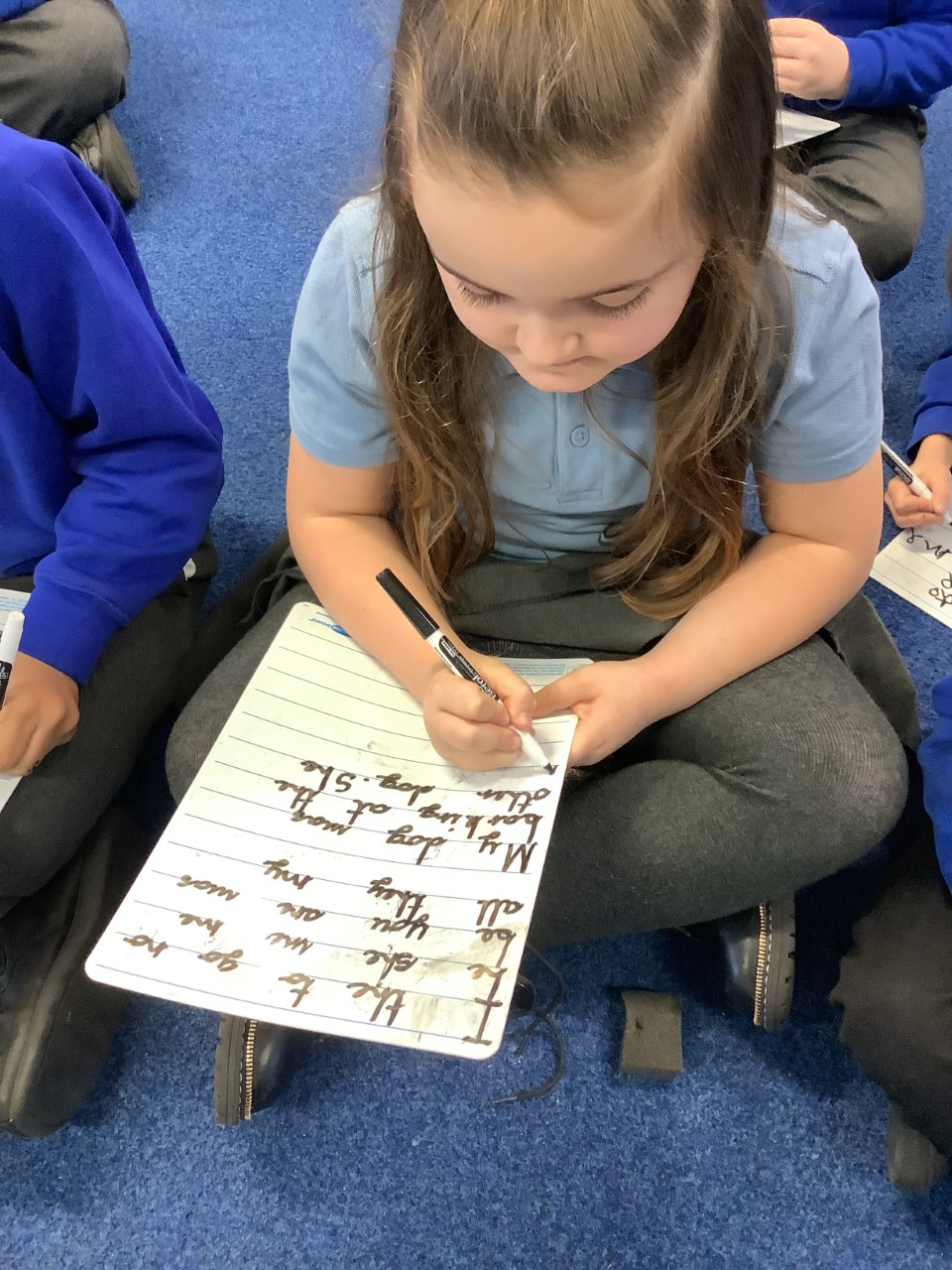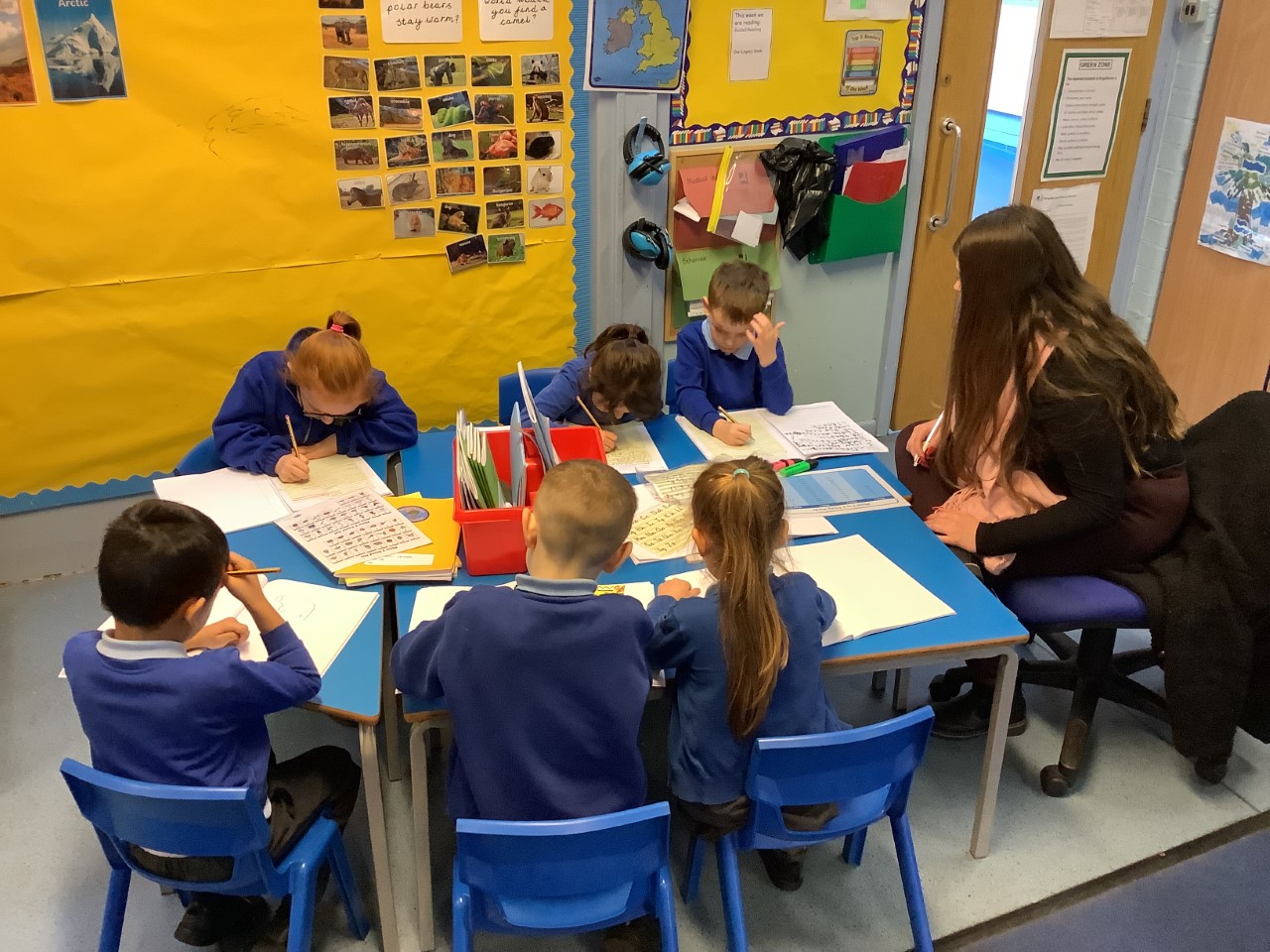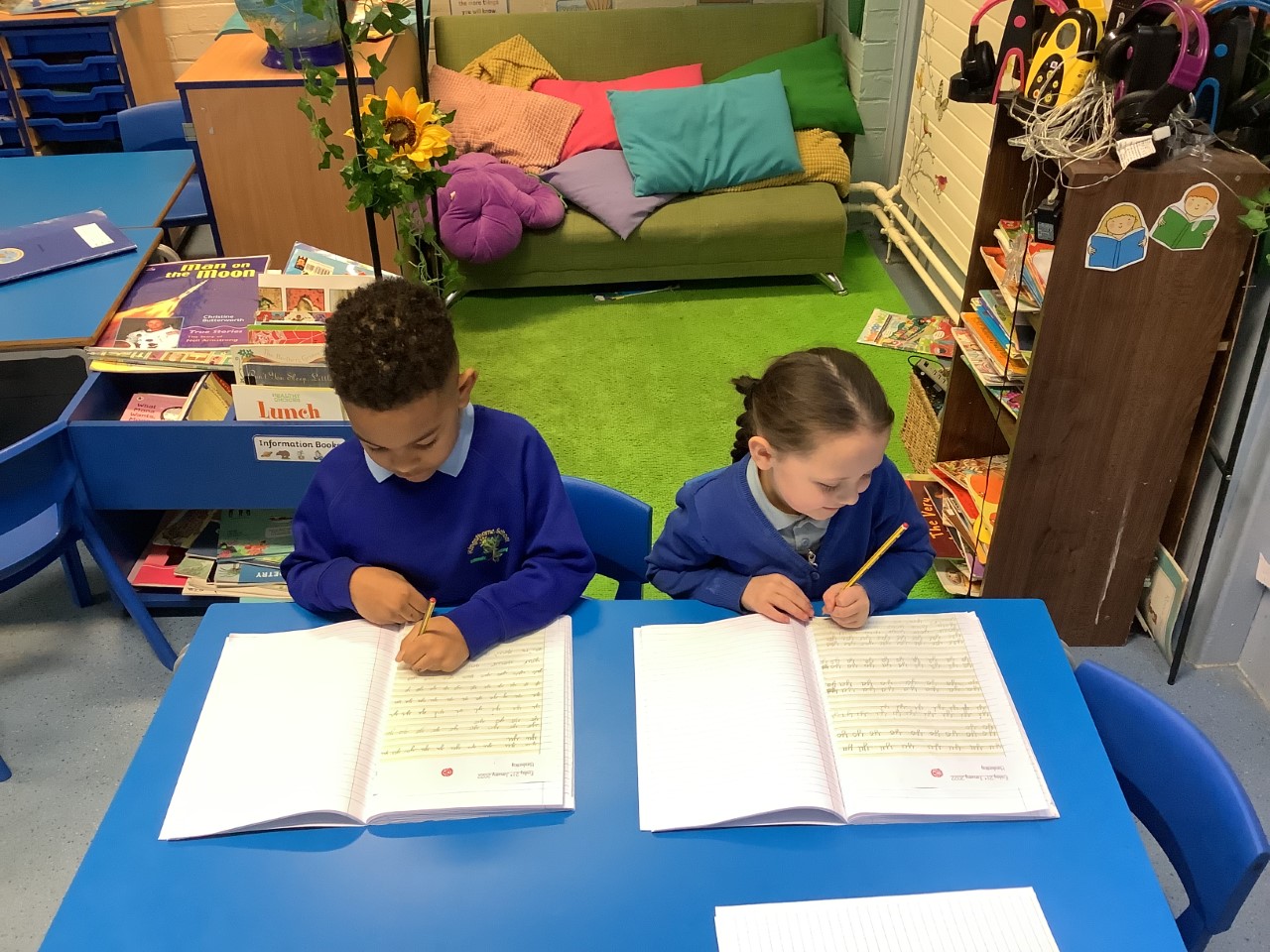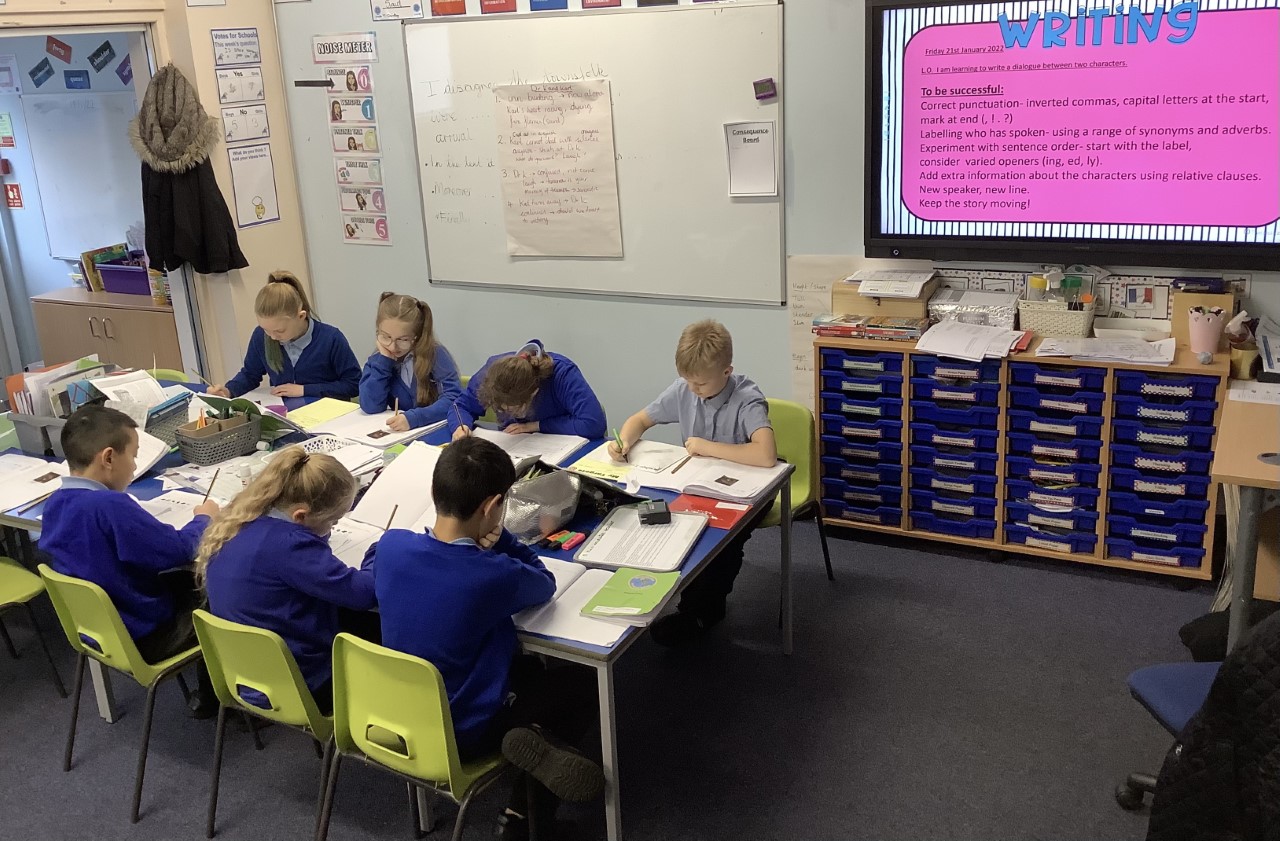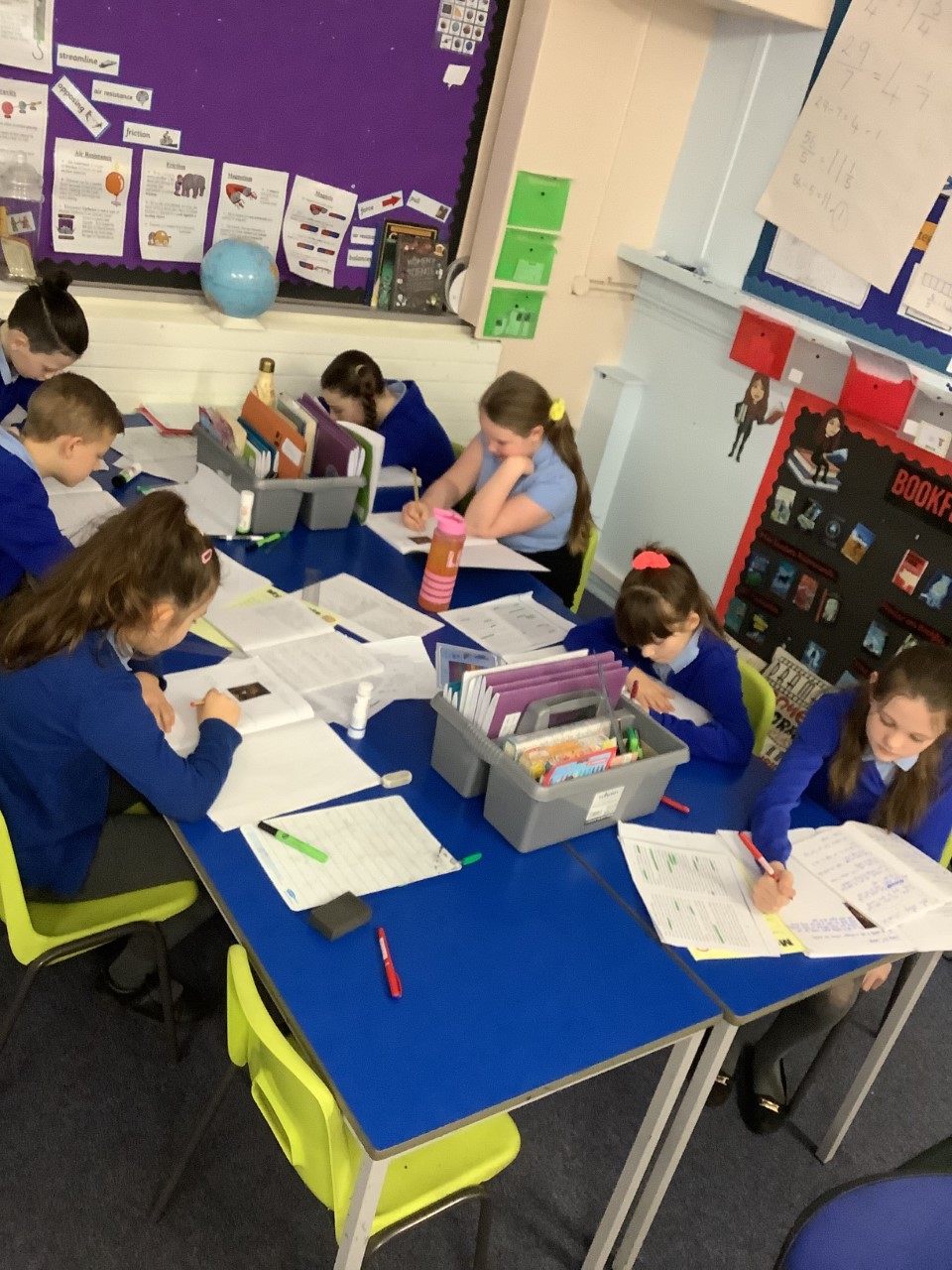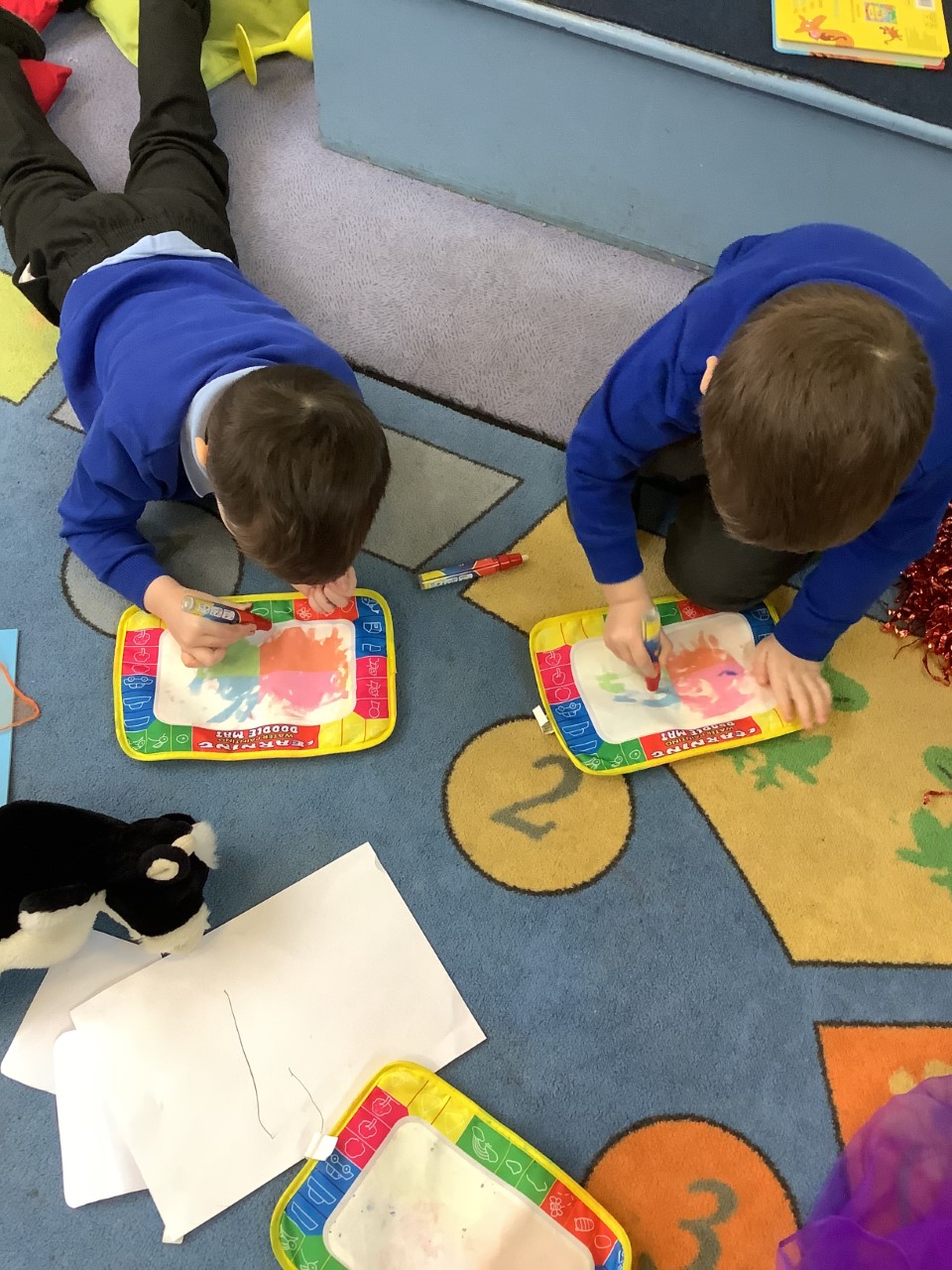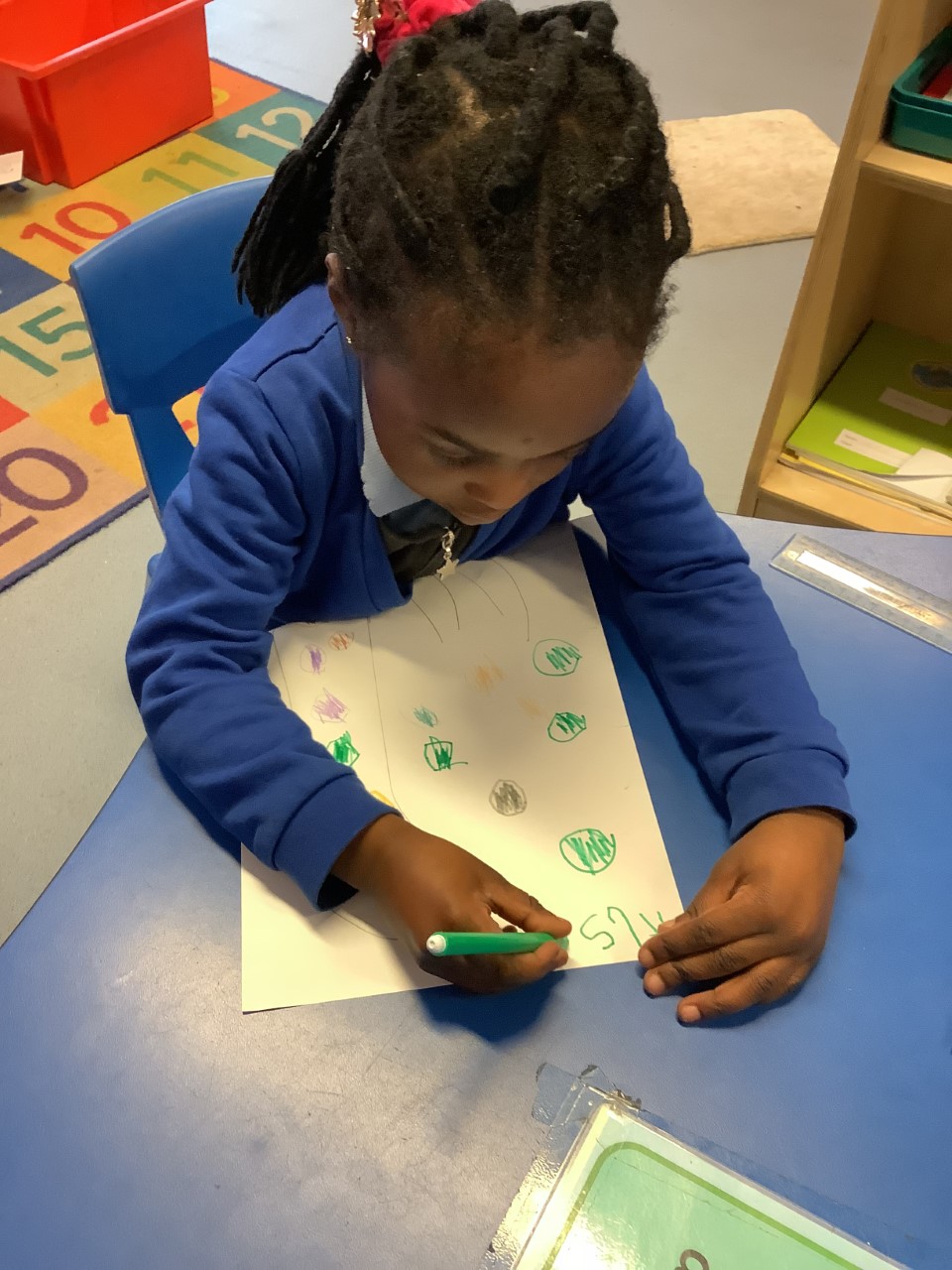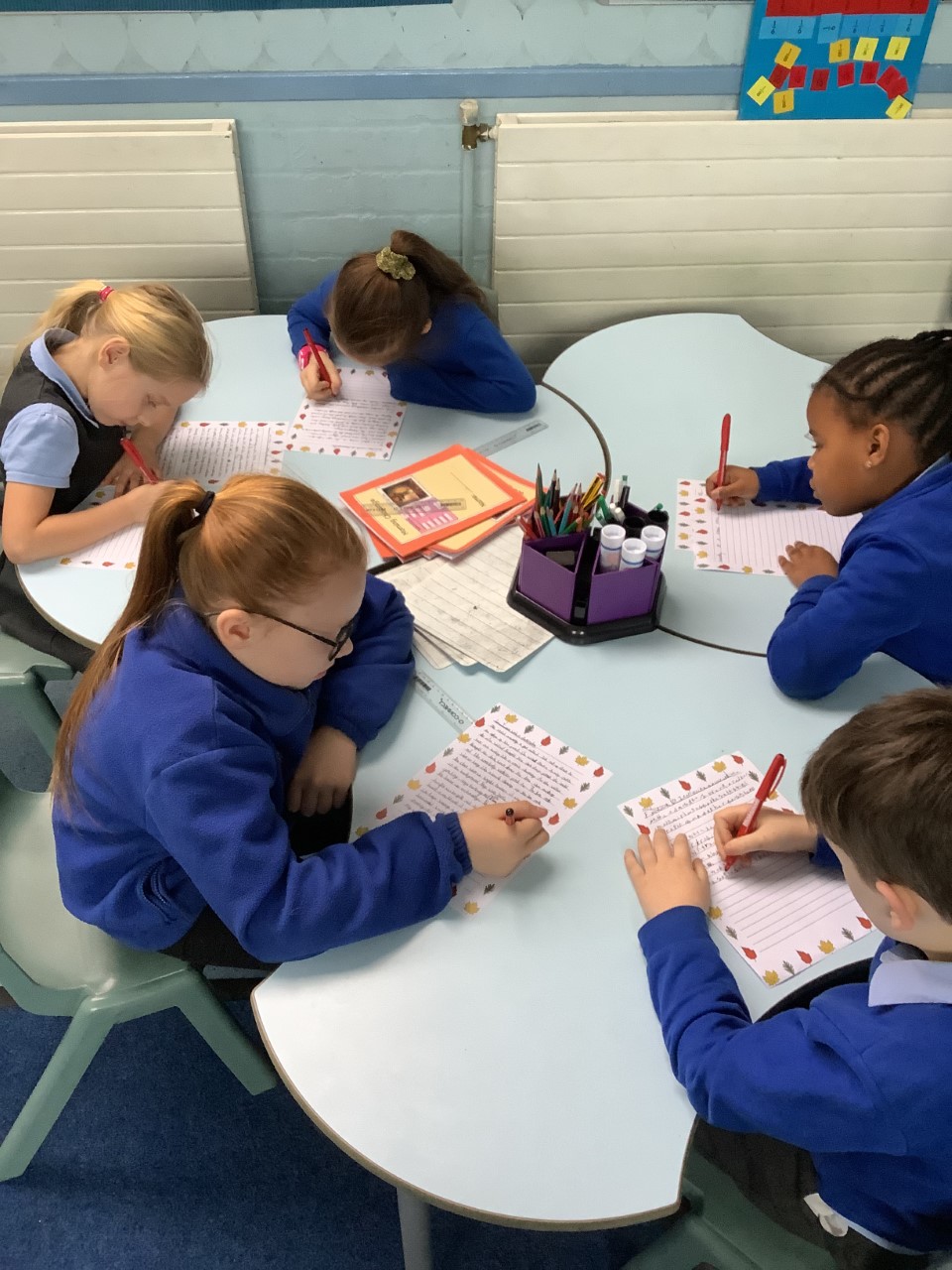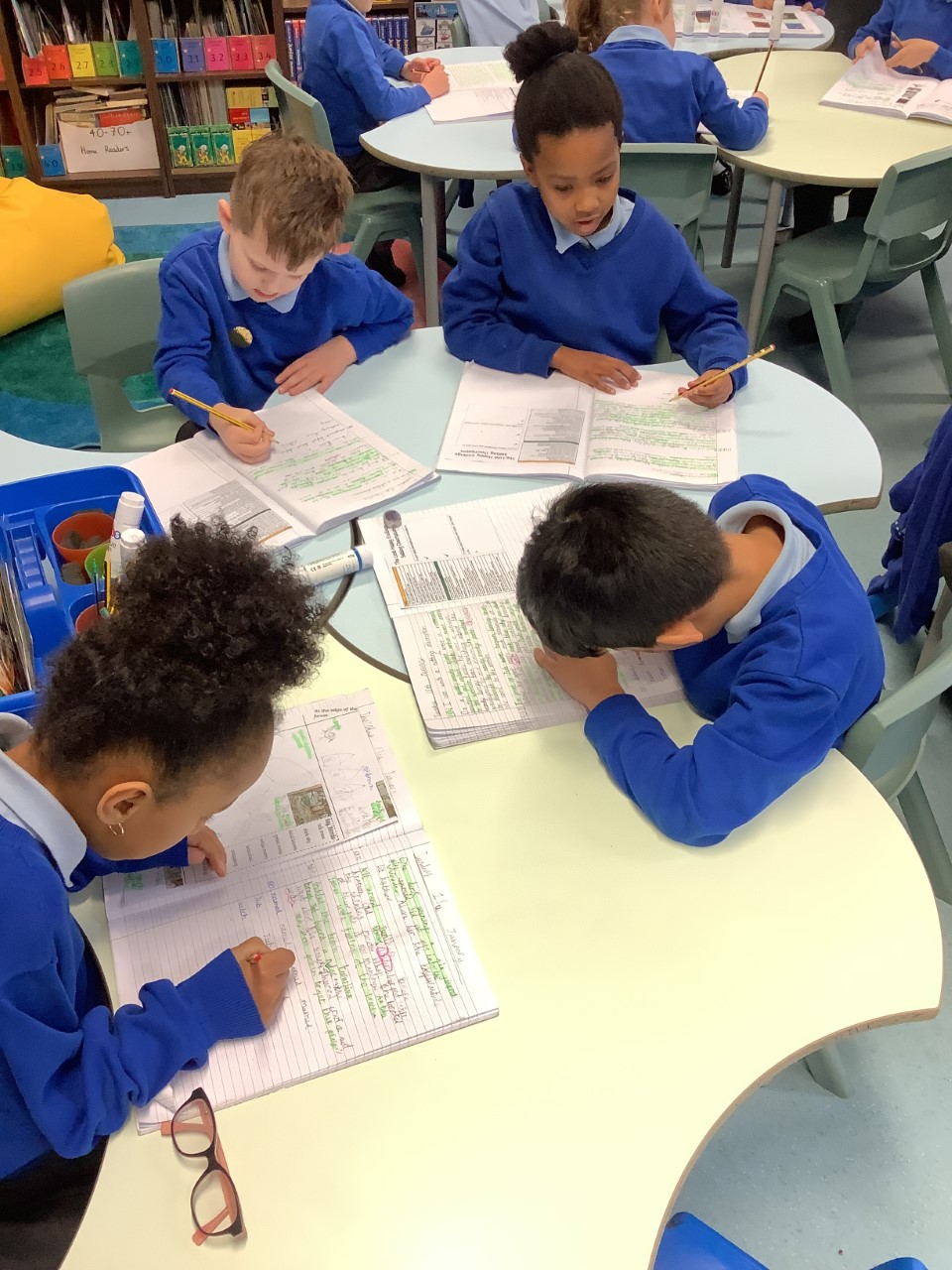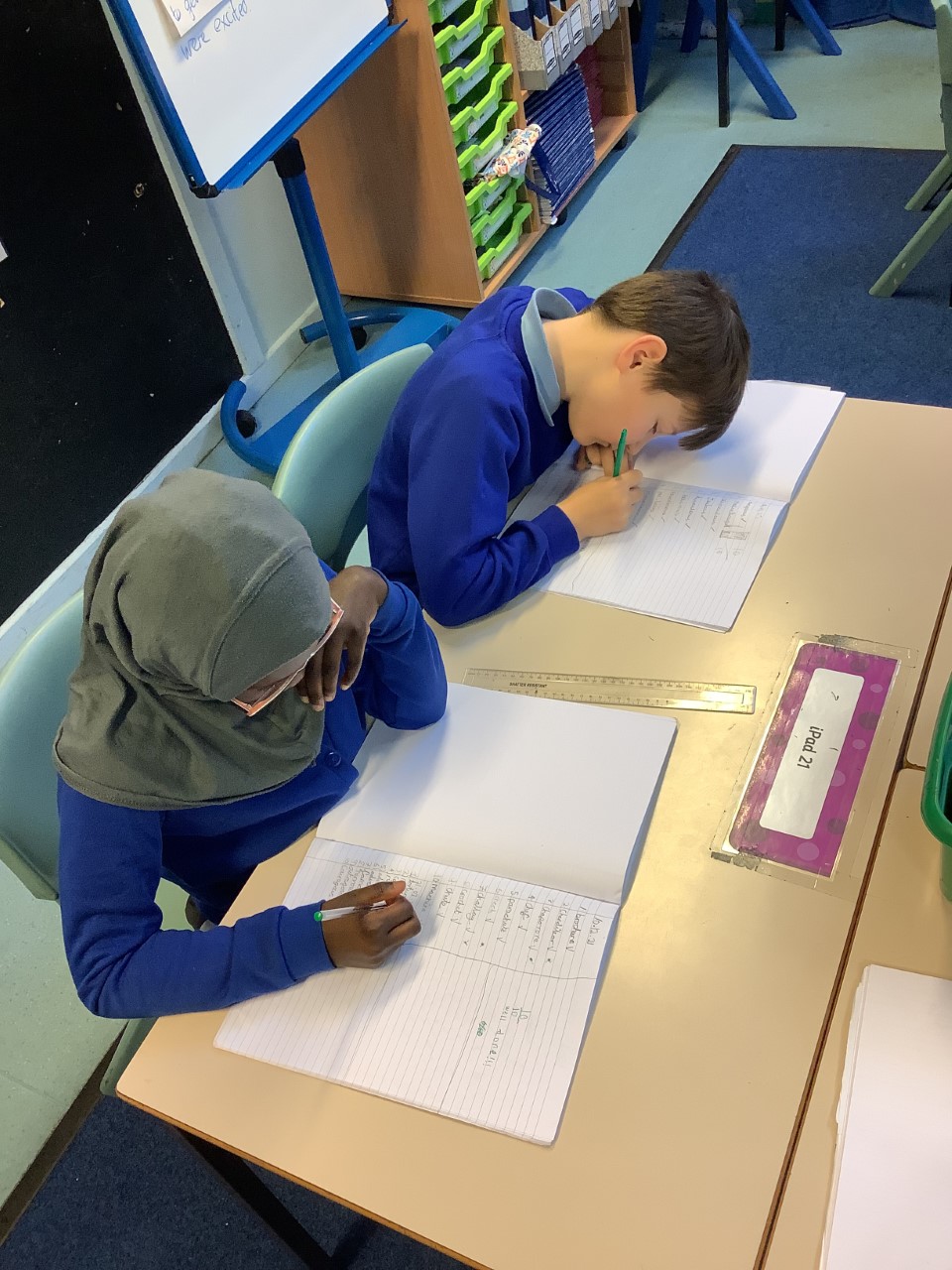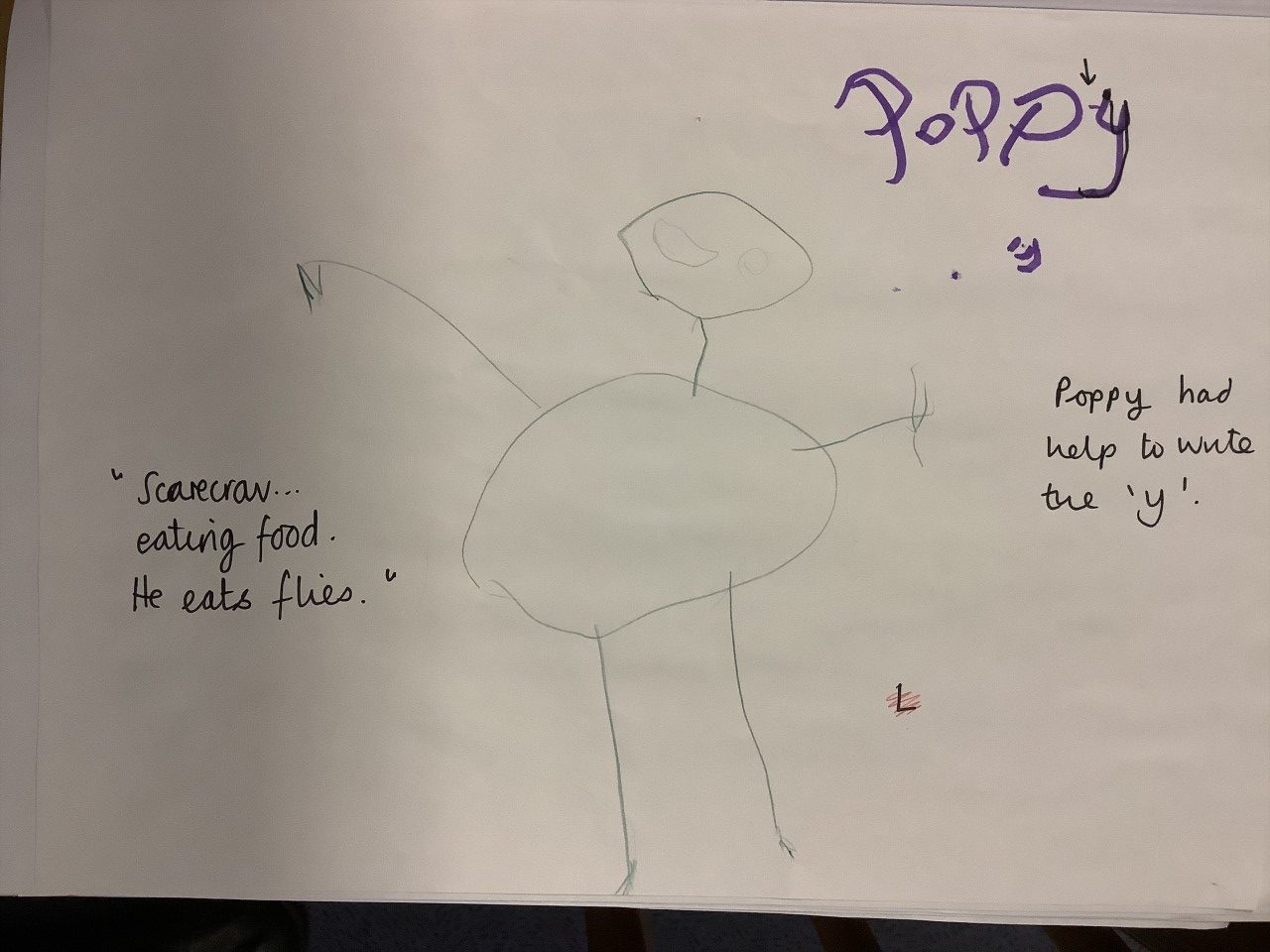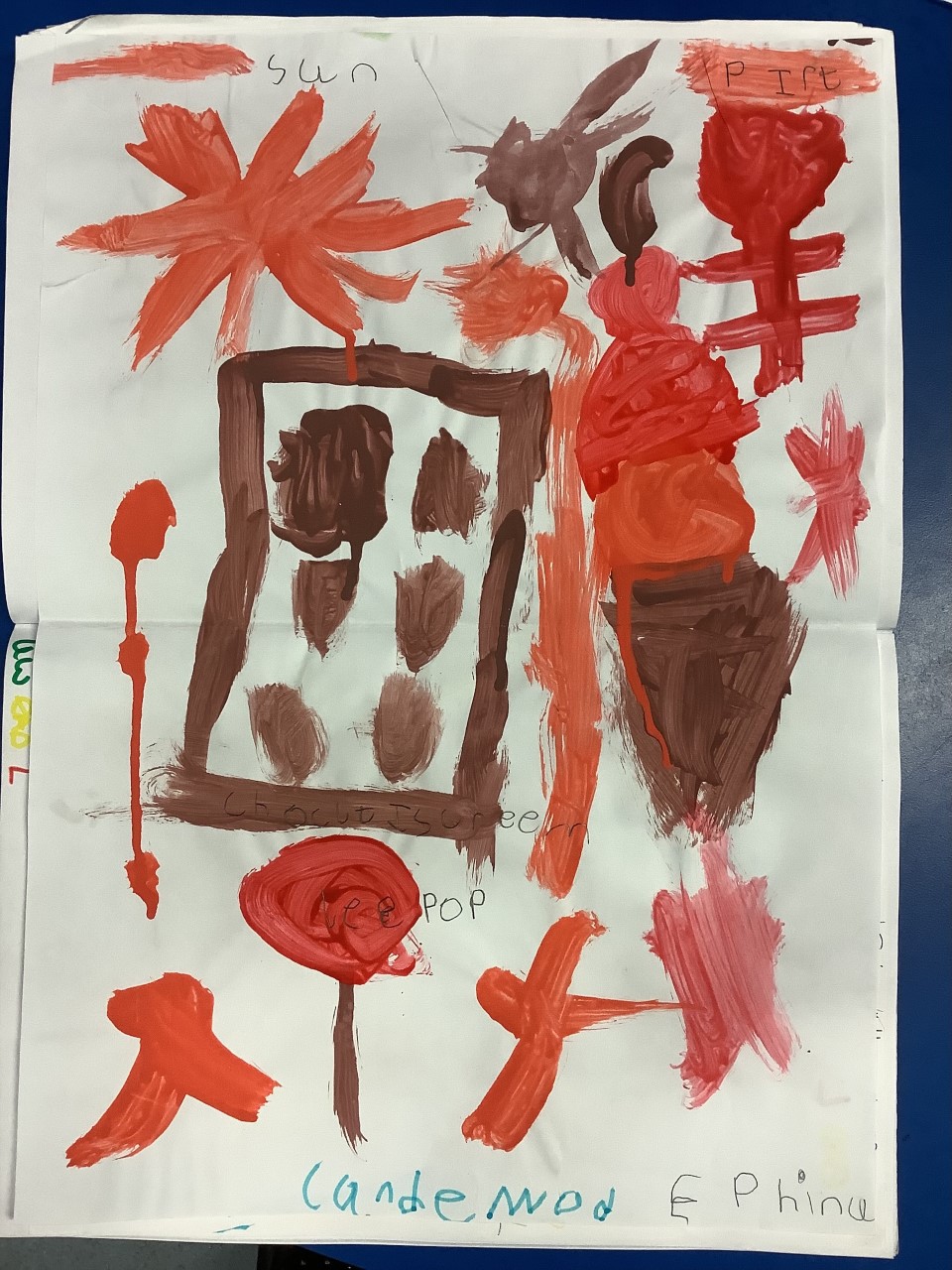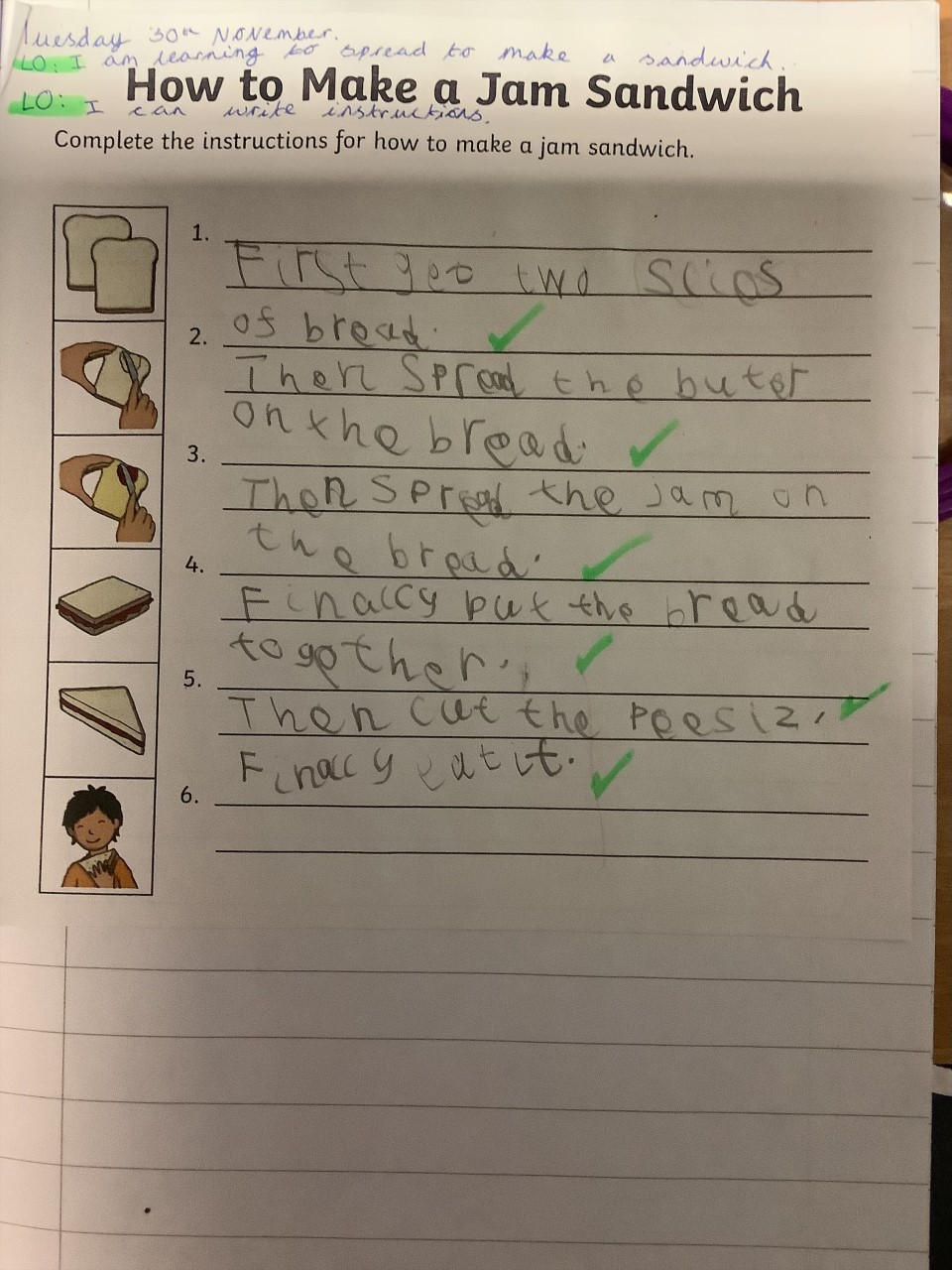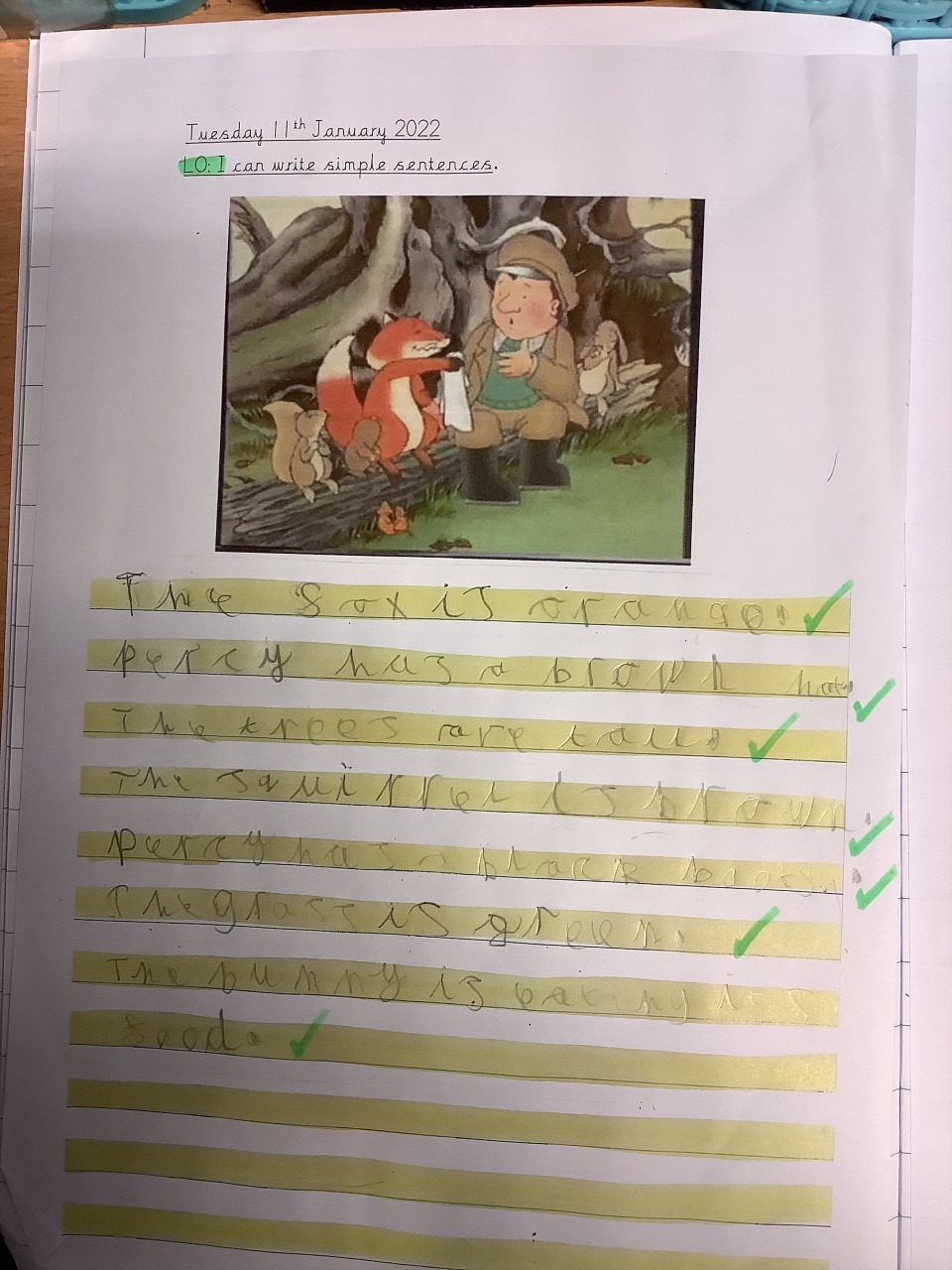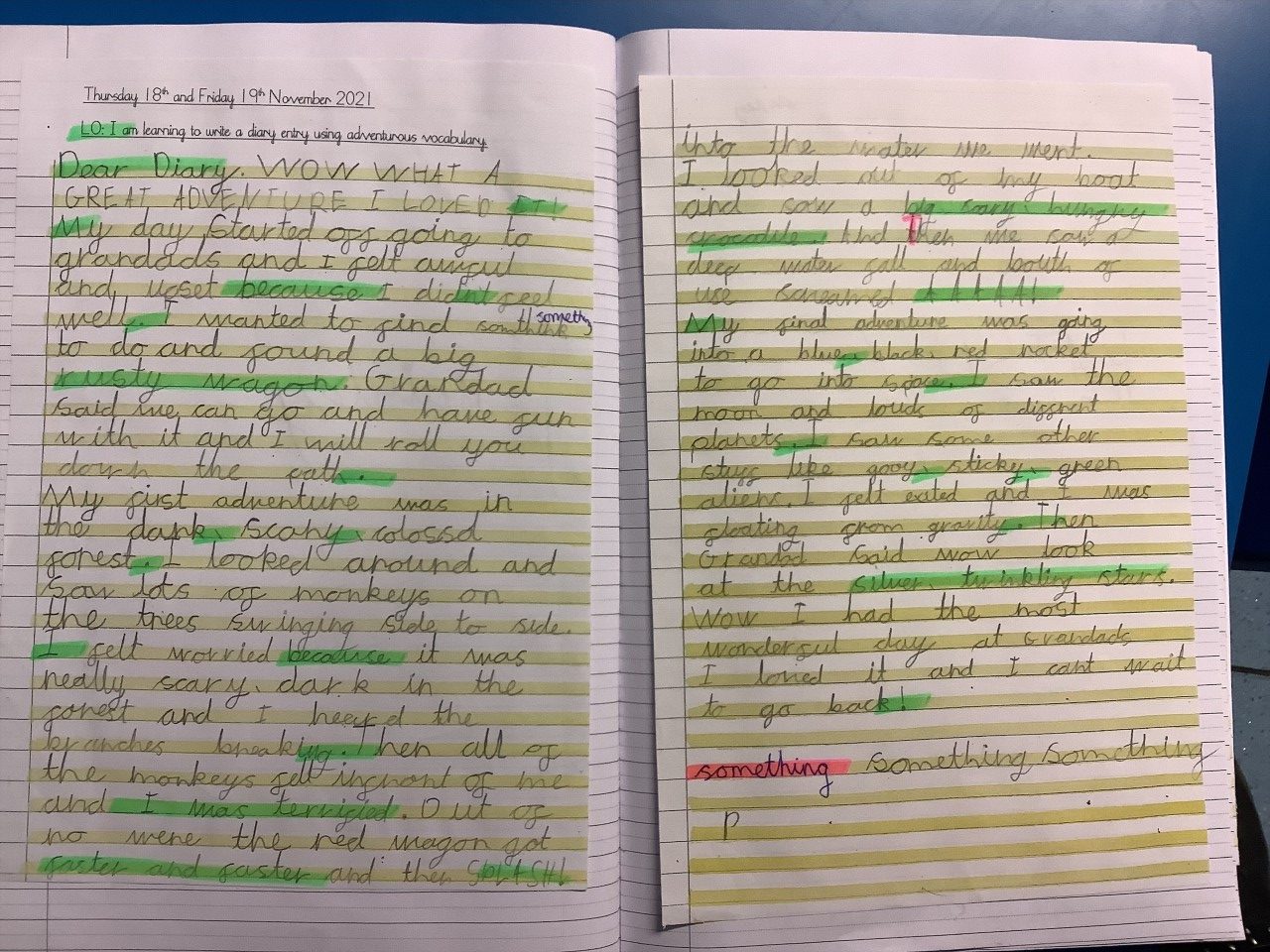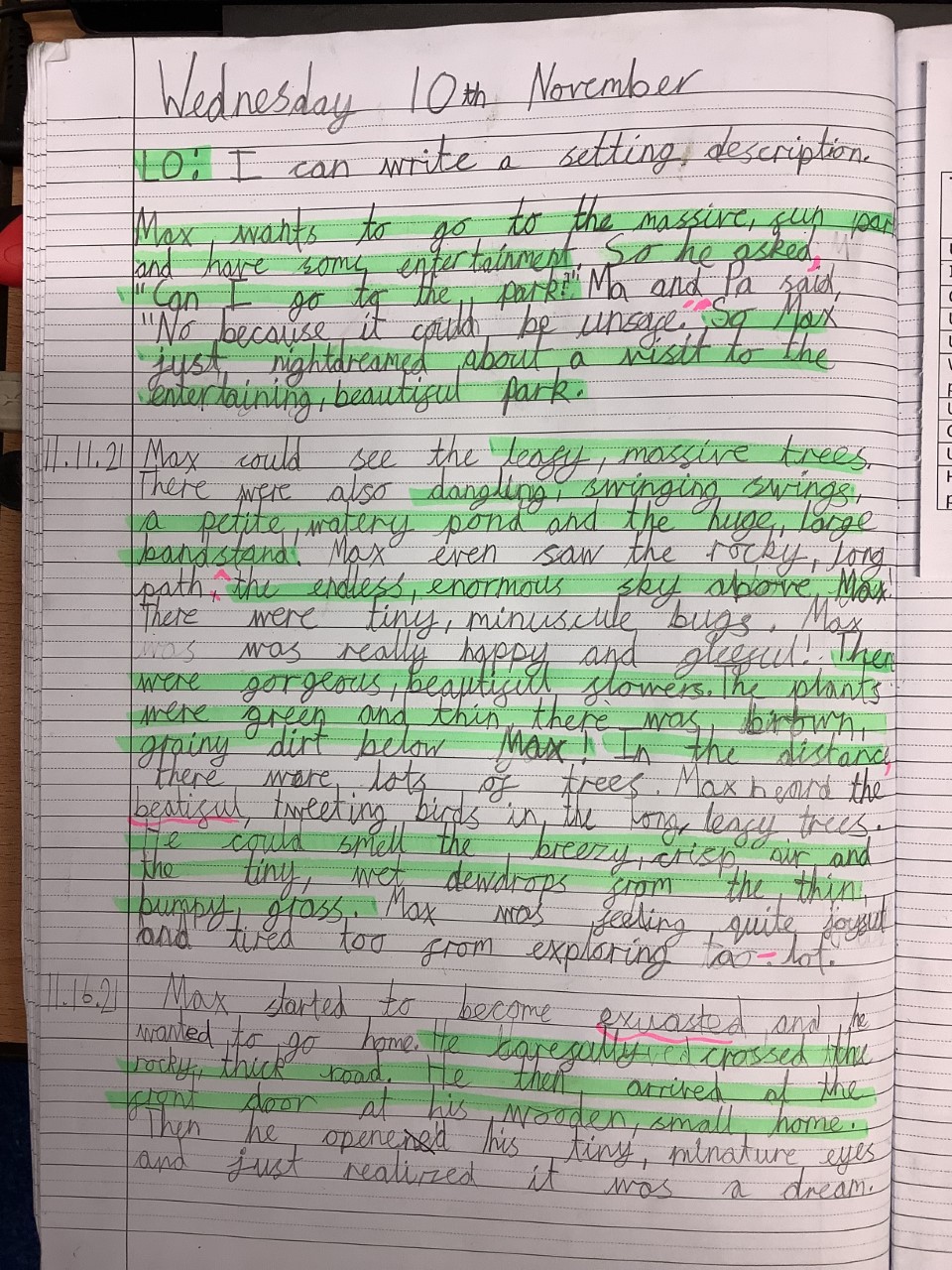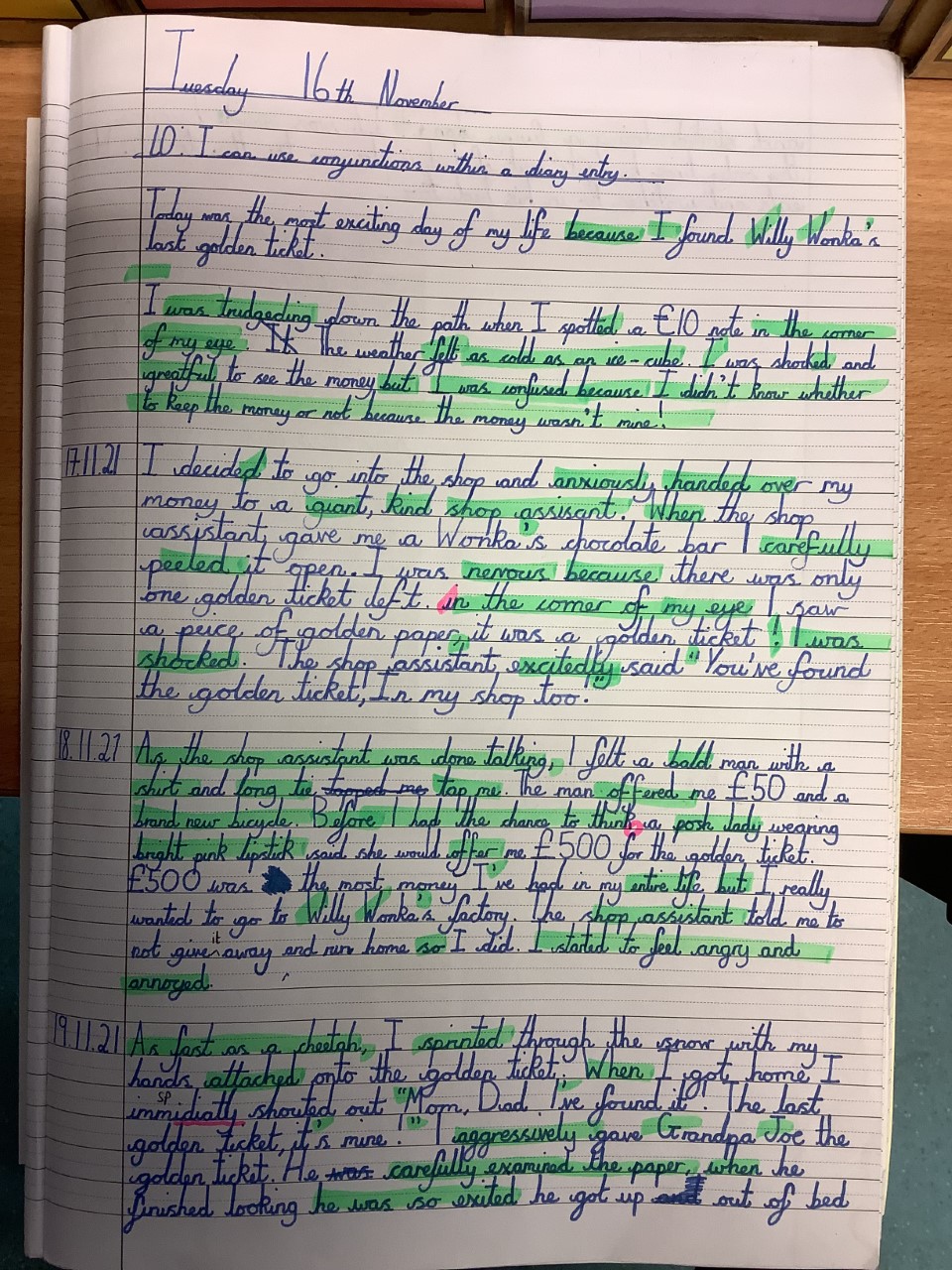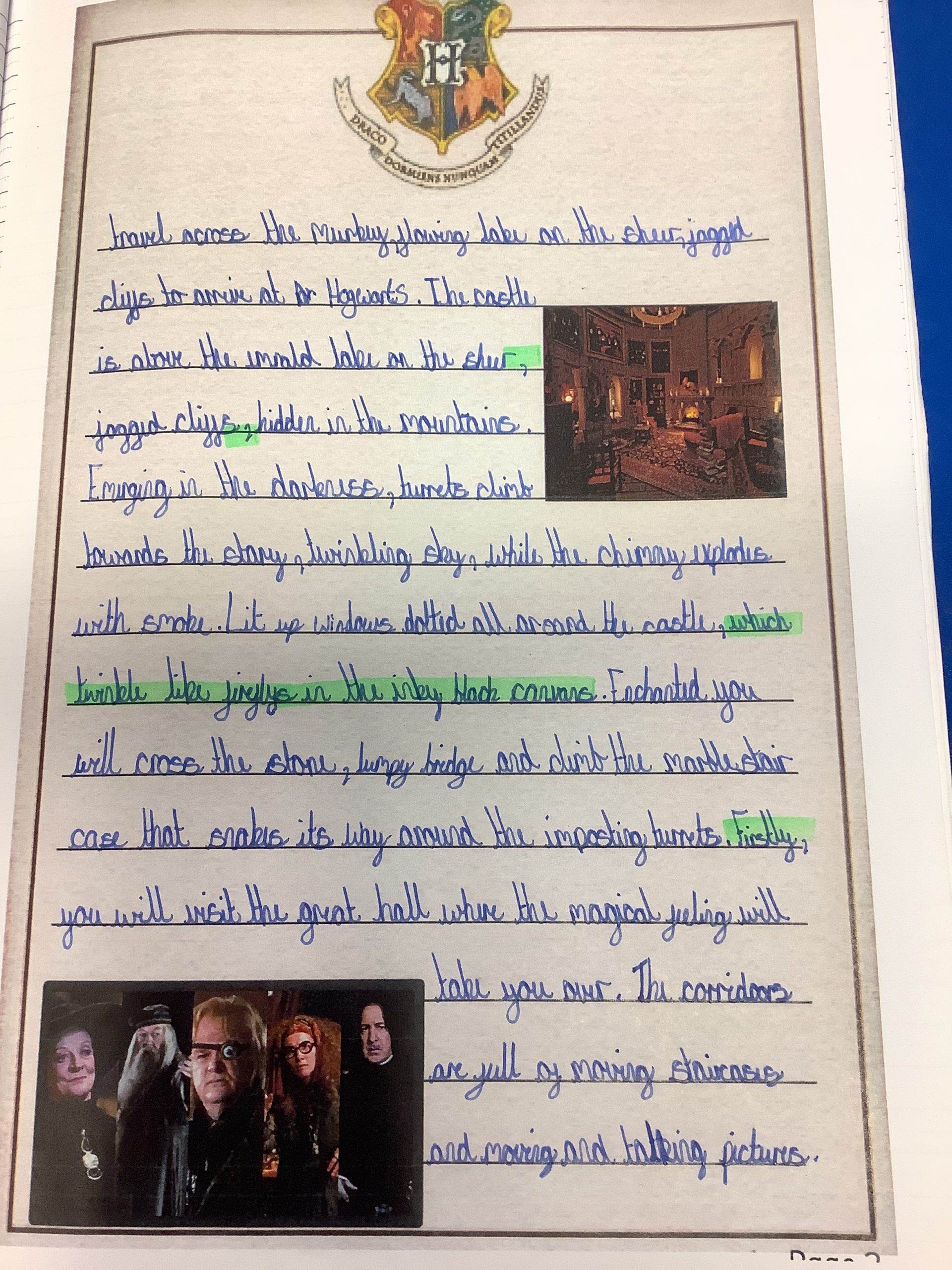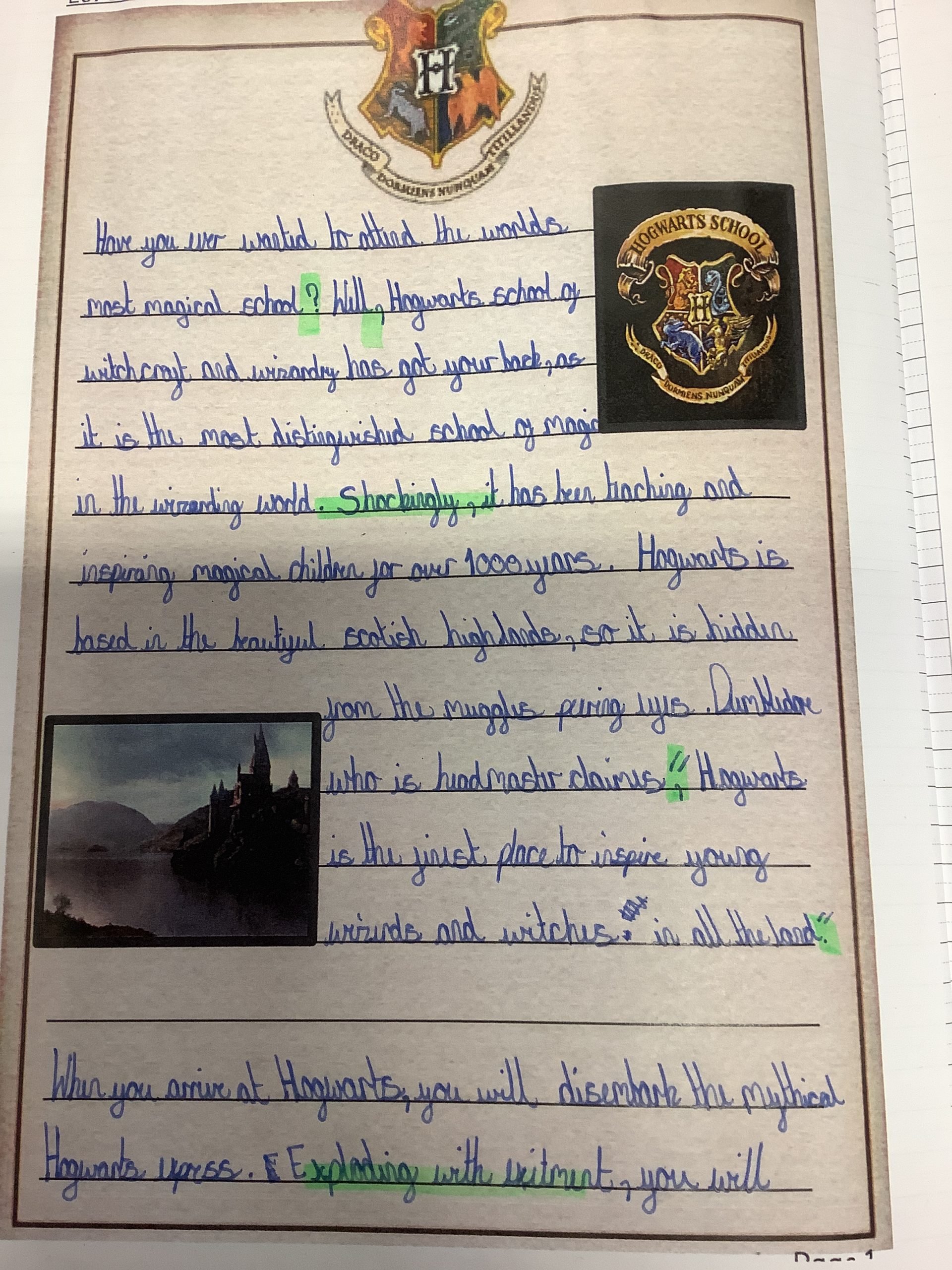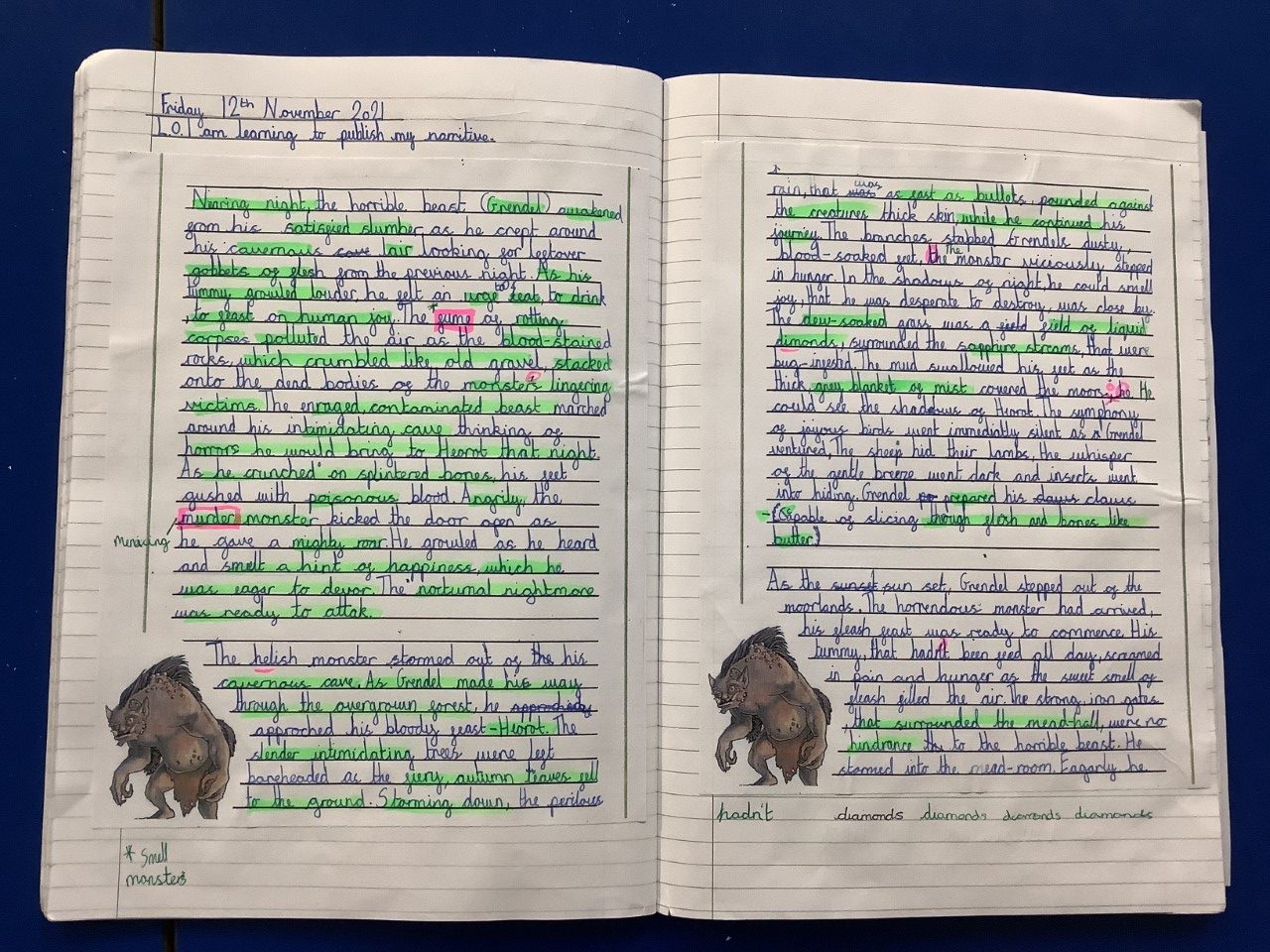OUR WRITING CURRICULUM
OUR AIMS
Our aim at Kingsthorne is for all children to enjoy writing and become confident writers. We do this by providing opportunities for children to experience literacy in a range of contexts, including making links with other subject areas. In writing, explicit links are made to reading and children are encouraged to read with a writer’s eye.
This year we have adopted “The Write Stuff” by Jane Considine to bring clarity to the mechanics of writing. “The Write Stuff” follows a method called “Sentence Stacking” which refers to the fact that sentences are stacked together chronologically and organised to engage children with short, intensive moments of learning that they can then immediately apply to their own writing. An individual lesson is based on a sentence model, broken into three learning chunks. Each learning chunk has three sections: Initiate section – a stimulus to capture the children’s imagination and set up a sentence. Model section – the teacher models a sentence that outlines clear writing features and techniques. Enable section – the children write their sentence, following the model. Children are also challenged to ‘Deepen the Moment’ which requires them to independently draw upon previously learnt skills and apply them to their writing during that chunk.
“The Write Stuff” uses three essential components (known as the zones of writing) to support children in becoming great writers.
The three zones of writing:
· IDEAS – The FANTASTICs uses a child friendly acronym to represent the nine idea lenses through which children can craft their ideas.
· TOOLS – The GRAMMARISTICS. The grammar rules of our language system and an accessible way to target weaknesses in pupils’ grammatical and linguistic structures.
· TECHNIQUES – The BOOMTASTICs which helps children capture 10 ways of adding drama and poetic devices to writing in a vivid visual.
During all key stages pupils’ interest and pleasure in writing is developed as they learn to write confidently and independently through a focus on transcription (spelling and handwriting) and composition.
· Nelson Handwriting is used throughout the school and taught in dedicated sessions weekly.
· Children will be taught spelling strategies using a variety of approaches as set out in English Appendix 1 of the new curriculum. As a school, we have designed our own spelling scheme using the curriculum and resources from Spelling Shed and No Nonsense Spelling. From Year 2, the children participate in weekly spellings tests. Target children will receive additional intervention to support spelling where necessary.
· The teaching of writing is primarily approached creatively through The Write Stuff approach. The majority of sentence level work is taught through writing. The children have discrete punctuation and grammar lessons alongside their Write Stuff sentence stacking lessons to further embed their understanding of writing skills.
In EYFS, children begin their writing journey by mark making, which then leads on to writing sounds learnt in phonics. Fine motor skills are a high focus, which supports the development of the children’s handwriting, leading to correct letter formation. By the end of Reception, children are expected to write simple phrases and sentences that can be read by others.
In KS1, they build on these skills by developing their independence in composing and extending their written ideas to create coherent pieces of writing for a purpose. Handwriting is further developed and the children learn pre-cursive letters and start to join.
In KS2, writing skills are further developed through exposure to a wide variety of engaging texts and encouraging children to read as a writer, therefore developing a writer’s voice. Children write for a variety of different purposes and hone their editing skills in order to continually improve their compositions.

